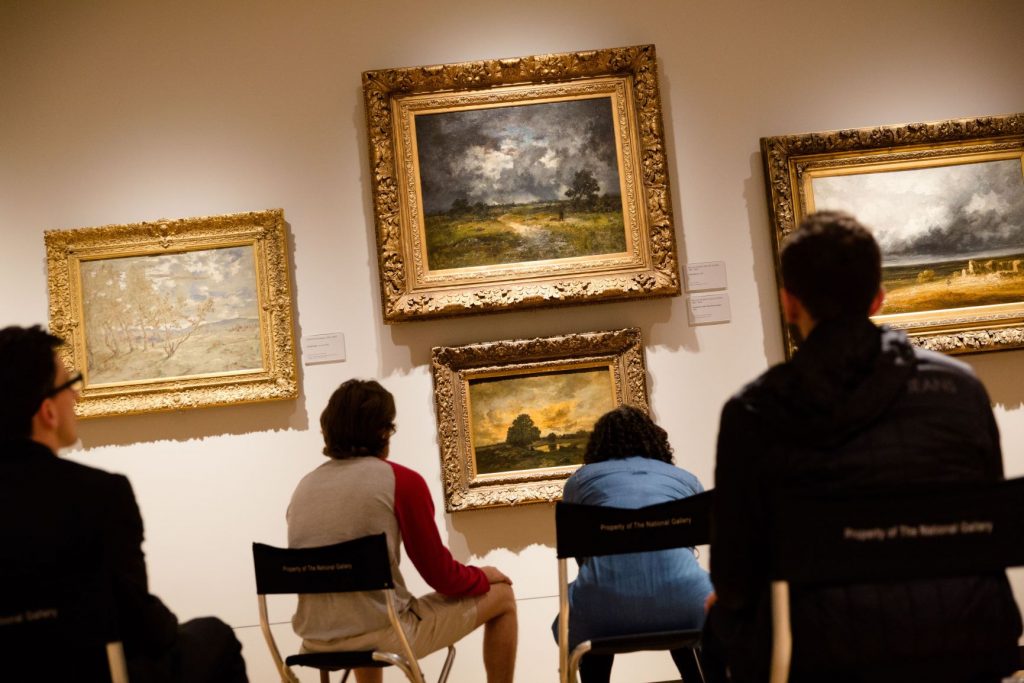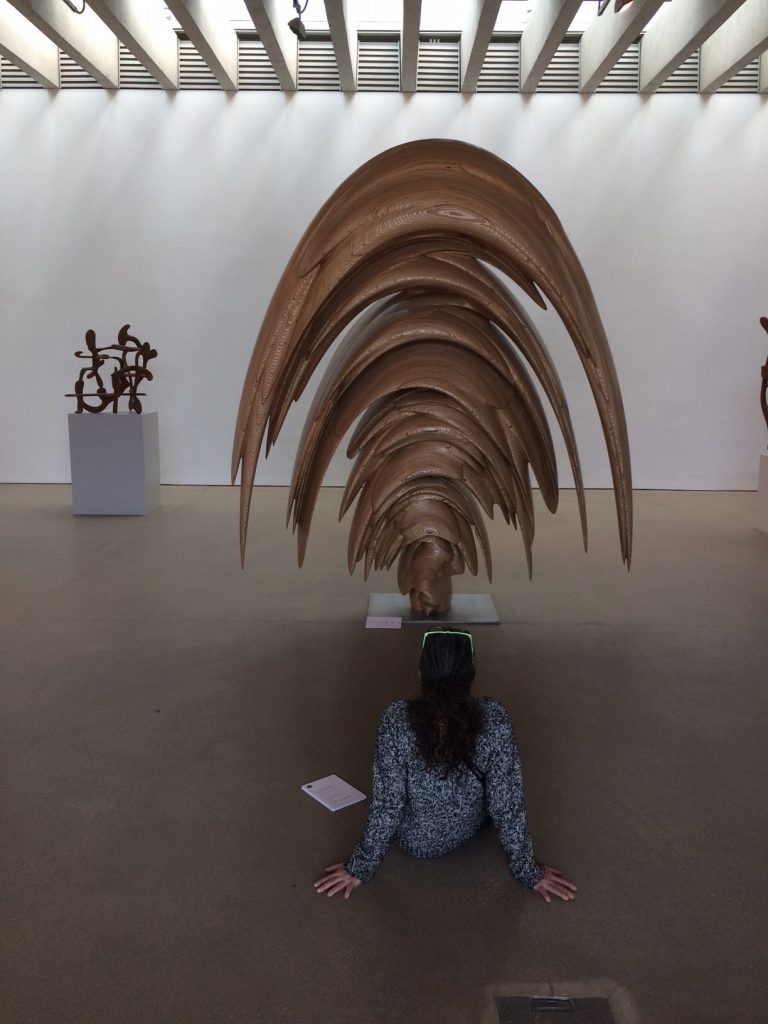During the spring 2020 Covid19 lockdown, the National Gallery in London began releasing 5-minute long art meditation videos on YouTube in order to promote mental wellbeing among the public.
Written by Christina Bradstreet, Courses and Events Programmer at the National Gallery, the meditation videos were produced at home by members of the gallery’s digital team and promoted across social media platforms.
So far, the slow looking video-series has included meditations on:
Turner’s ‘Rain, Steam, and Speed’
Redon’s ‘Ophelia among the Flowers‘
Rosa Bonheur’s ‘The Horse Fair’
Bonington’s ‘An Estuary in Northern France’
Zurbarán’s ‘A Cup of Water and a Rose’
A true slow looking pioneer, Bradstreet is a powerful advocate at the National Gallery for slow programming throughout the year. When we asked her how she first became aware of the power of slow looking, she recalled how she felt as she walked home after attending her first mindfulness class:
“I felt acutely aware of the crunch of my footsteps on the gravel, the air on my skin, the bird song – and I thought, “wow! maybe mindfulness can really help us to savour the sensory details of paintings.”
Christina Bradstreet
Her positive experience inspired her to design a range of events at the gallery, such as finding wonder in familiar paintings like Van Gogh’s ‘The Sunflowers’, mindful looking, drawing sessions, and, during the lockdown, the above meditation videos.

Picture courtesy of the National Gallery.
The first two slow looking videos have been an enormous success, with an average of 16,000 hits each on Youtube, and a total of 260k hits and counting across the gallery’s social media platforms.
Viewers have also given strongly positive feedback:
“Well done. Please do more.”
“*Delightful*”
“Fabulous meditation! Thank you so much for these slow looks.”
“Soul touching and relaxing with a new breath of freshness.”
“I’ve seen this painting many times but I never saw the hare, or the people at the side of the river [in Turner’s ‘Rain, Steam, and Speed’]. Thank you so much!”
Participant Quotes
Bradstreet also shared with us some thoughts on the design of these 5-minute videos:
Rather than simply offering a slow looking experience, I’m interested in choosing meditation techniques that connect with the paintings content or how it was painted, so that the art and the meditation enhance one another. For example, in the video on Rosa Bonheur’s The Horse Fair, I explore the theme of the commotion of the busy horse fair as a metaphor for the busy mind, and think about how we might stay mindful when the world is chaotic around us. Clearly, these themes can be taken much further in a longer meditation. However, we have kept these short, partly because many of our audience will be beginners at meditation, and partly because we don’t want to add to online fatigue!
Christina Bradstreet
The National Gallery has truly captured the essence of slow looking within these meditation videos, and I have loved incorporating the short art meditations into my own workday as a way to relax. I recommend that you do the same.
I and the whole Slow Art Day HQ team hope that these videos inspire more slow looking around the world. We can’t wait to see what Christina Bradstreet and the National Gallery in the UK design for Slow Art Day 2021.
– Johanna


